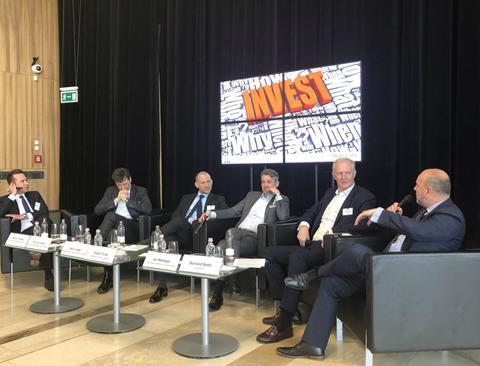Rental growth and a development boom are coming to Central and Eastern European countries, delegates heard at the Outlook 2018: Europe & CEE Investment Briefing, which was held in Budapest last week.

‘The region is on a growth path and has real momentum,’ said Mark Robinson, CEE research specialist, Colliers International. ‘We now see rental growth, which is the next stage of the cycle. Of all six countries, Hungary presents the most bullish picture for rental growth.’
There is a development boom underway in Hungary, Poland, Czech Republic, Slovakia, Romania and Bulgaria, said Robinson, as ‘yield compression, low interest rates and rising rents encourage speculative development. As the cycle progresses, developers become more exuberant. The development boom could be particularly intense in Hungary.’
Economic cycles tend to peak out with a development boom, but in CEE the end of the good times is not in sight, said Robinson: ‘We feel we are ascending towards the peak of the cycle, but we are not there yet. We are most unlikely to reach the peak in 2018, so we are quite confident there will still be positive returns for investors in this region.’
Impressive GDP growth, driven by consumption and investment in the region, is underpinning the strength of the property market. Investment flows have seen a steady trend upwards since 2012. The preliminary figure for last year is €12.9 bn, up from €12.2 in 2016, which means it almost matched the record €13 bn of 2007.
‘Q4 saw particularly good inflows, so the figure for 2017 could be revised upwards,’ said Robinson. ‘The cycle is very strong and our view is that the 2007 figure will be overtaken in 2018. It seems that CEE will continue to defy the downturn in EMEA, as it did last year. Consumer sentiment continues to rise in all six countries and this suggests a further €1-2 bn volume growth in 2018.’
Investment volumes in EMEA might be slowing down, but economic growth in the Eurozone, which at 2.5% is the fastest since the financial crisis, is a clear positive for CEE. ‘The European locomotive is pulling the Eastern European train,’ said Robinson.
Retail is the biggest sector in CEE, attracting €5 bn of investment to the six countries in 2017, followed by offices with €3.5 bn and industrial with €2.2 bn.
Logistics is doing extremely well yet the e-commerce story is just beginning, said Ian Worboys, CEO, P3 Logistic Parks: ‘There is great strength in the market. We anticipate yield compression in all CEE countries. In the Czech Republic, to give just one example, one in ten transactions is done online and Amazon is not even there yet.’
However, it was the hotel sector that grew the fastest in 2017, with volumes doubling to €988 mln. ‘It is interesting to see this sector booming, because a preference for hotels does tend to indicate a strong economic cycle,’ said Robinson.
The residential market is another interesting barometer of the strength of the local economy, he said. House prices have been rising across the board, with Hungary in the lead with +10.2%, Poland the slowest at +3.7% and the others in between. According to Robinson, ‘only interest rate rises or a substantial banking crisis could derail these markets.’
What is attracting American, Asian, European and South African investors to the region is its dynamism, said George Leslie, head of investment management, HB Reavis: ‘There are always opportunities, especially in the capital cities.’
One overlooked story is the non-prime sector and the value-add opportunities it offers, he said: ‘There is a whole cohort of value-add investors who have been extremely successful, yet they have not covered all the opportunities. There is a very interesting dynamic in the region and there is still a lot more that can be done.’










